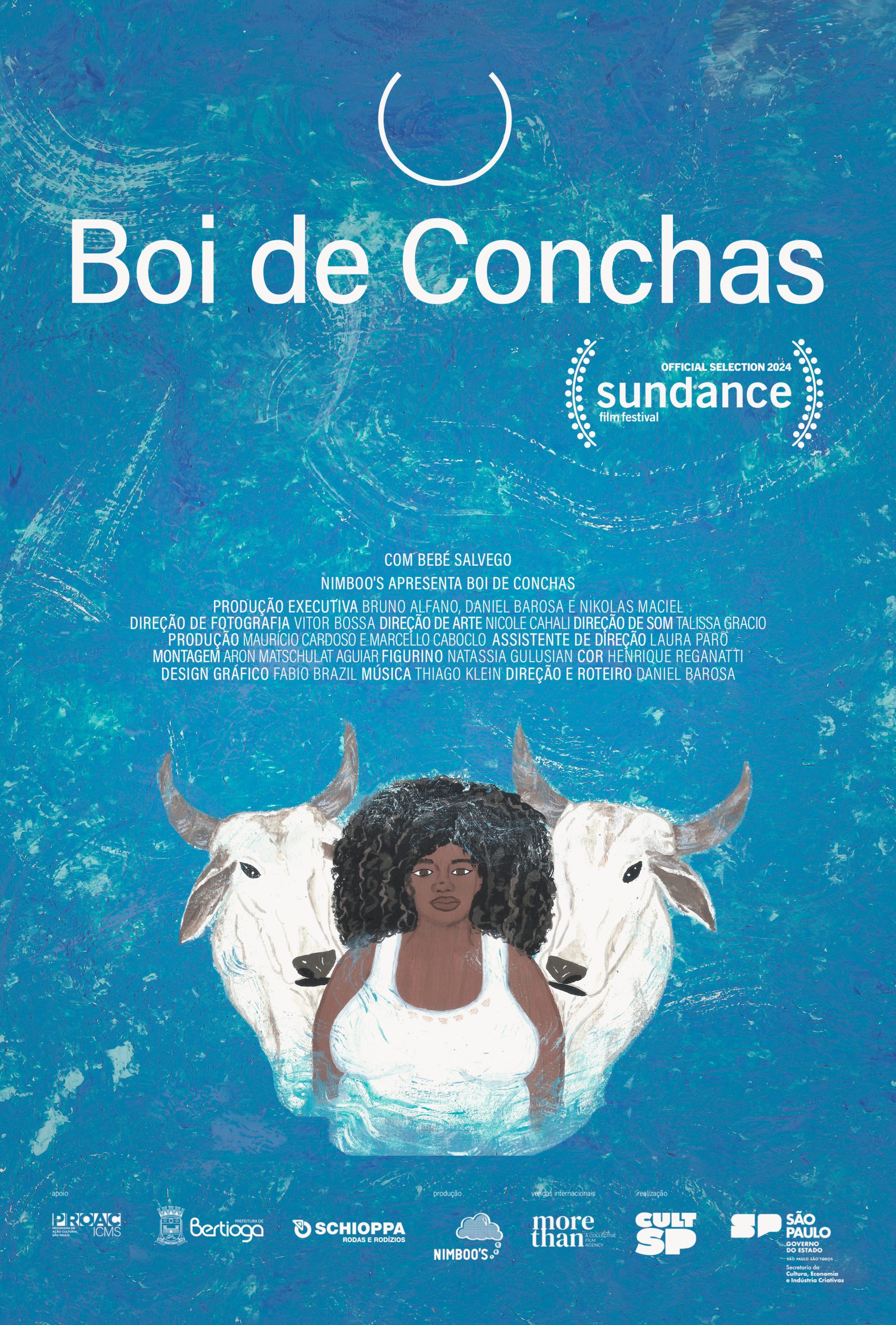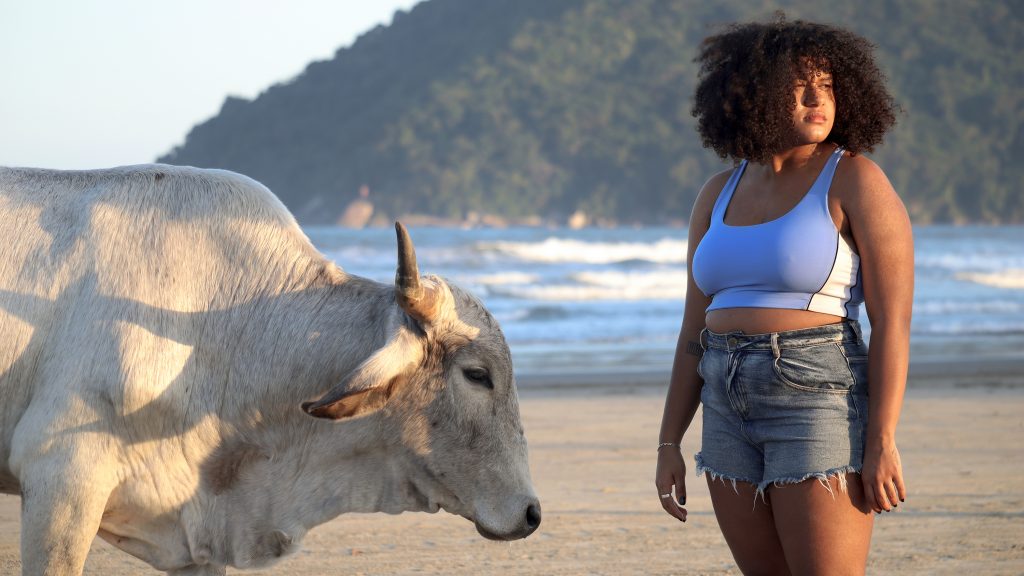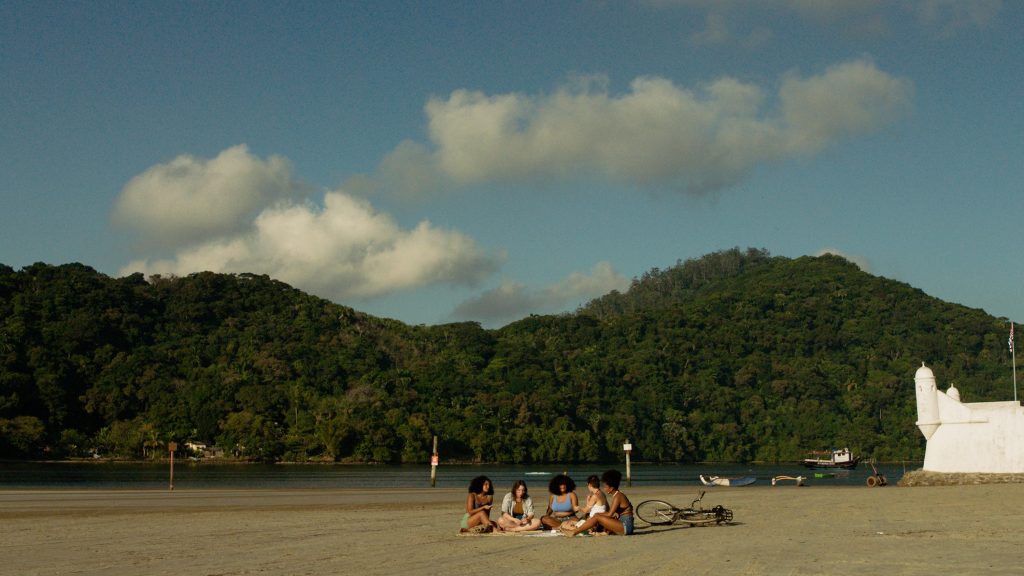Filmmaker 5 with Daniel Barosa: Boi de Conchas / The Shell Covered Ox

While mourning her missing sister, Rayane balances helping her fisherman father and practicing for the school’s music festival – provided she doesn’t become an ox first, a misfortune assailing several teenagers in the area. Short film Boi de Conchas borrows its title from a folkloric manifestation born in Ubatuba, Brazil, about an Ox named Ratambufe, an animal that longed to see the ocean in defiance of its fate. Teenager Rayane remains determined to honor her missing sister’s memory, defying a life where despondent teenagers become so resigned to their fate that they resemble silent oxen grazing in the fields.
Combining folklore and it metaphors to address the topic of grief through the eyes of a younger generation, Boi de Conchas presents the vision of critically acclaimed, award winning filmmaker and Slamdance alumni, Daniel Barosa. Boi de Conchas premiered in the Short Film Program 4 at Sundance Film Festival 2024.
Our Filmmaker 5® interview with Boi de Conchas writer and director Daniel Barosa follows.

Filmmaker 5.1: How did the folklore tale of the Ox named Ratambufe present itself to you for this story? Why incorporate it to help tell a modern tale of grief?
I wanted to tell a story set in Bertioga, this small fisherman town in the coast of Brazil. And I had the themes that I wanted to work with such as loss and mourning in this post-pandemic world. When I read about the folklore I thought it was a beautiful and strong metaphor about transformation and changing your destiny. This really talks to the themes I had so I incorporated some elements to the story.
Filmmaker 5.2: The film contrasts folklore traditions with modern realities. How did you determine the sights and sounds to bring this forward in the film and in what cadence?
We shot most of the film in real locations in Bertioga. So we wanted to stay true to the town as much as we could, using real fishermen boats, the fish market, etc. These elements reinforce the folkloric nature of the film, while the use of social media posts, webcam vídeos and so on reinforce the modern reality in which theses characters are inserted in.

Filmmaker 5.3: Music is an important component of the film’s story—almost a character itself. How did you select and work with your collaborators on the score to convey the story?
We used music from a Brazilian death metal band called Krisiun. This was incorporated to the story since the writing of the script. To me, the mix of bleak lyrics, raw energy and fast pacing translates well the youth inner turmoil. As for the original score we have in the film, composer Thiago Klein created a dreamy, and at the same time eerie, musical backdrop to enhance the fantastical nature of the oxen and what they represent.
Filmmaker 5.4: As director how did you work with the film’s lead Bebé Salvego to elicit such an authentic performance—especially pivoting against a backdrop that includes fantastical elements and harsh daily realities?
We were so lucky to have Bebé Salvego in the film. She is a singer, not a professional actor, and this was her first time in a narrative film. Focusing in the documentary and naturalistic portrayal we wanted for the short, we decided to work with non-actors. So instead of traditional rehearsals, we discussed a lot about the characters and their background. It was much more a process of understanding them and letting the scene develop and grow on its own then doing traditional rehearsals in search of the right tone for each moment. In the process a lot of the dialogues changed and some improvisations ended up creating new actions that were incorporated to the final cut.

Filmmaker 5.5: It’s hard to pick favorites, but do you have a scene that surprised you in how it came together and helped drive home your theme and vision?
The scene were all the teenagers are talking in the beach is one that really stuck with me and makes me proud. They were all locals from Bertioga that went to the local community theatre because of a passion for the arts. But even though none had done film, they seem so natural and at ease that the scene works beautifully. And it’s an important moment in the story because it’s where we see how this youth portrayed in this world functions and the complicated surrounding they are immersed in.
BONUS: What do you hope your Sundance audiences take away from the viewing experience as the film makes its premiere?
I hope the audience enjoys the film and gets to see this small piece of Brazil and its rich culture. This story also touches strong subjects that are universal, and hopefully it will make the audience find some sort of identification.
